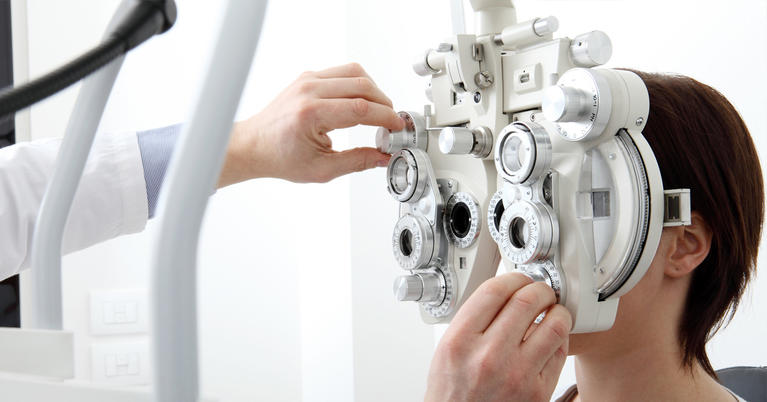The Advantages And Disadvantages of Different Refractive Surgical Procedures for Boosted Eyecare

LASIK Surgical Procedure
LASIK surgery is a commonly executed refractive procedure that intends to fix vision concerns such as nearsightedness, farsightedness, and astigmatism. This medical method has acquired appeal as a result of its effectiveness in offering people with more clear vision and lowering their dependence on glasses or contact lenses. During the procedure, a thin flap is developed on the cornea, and a laser is made use of to reshape the underlying tissue, dealing with the refractive mistake. The flap is after that repositioned, enabling for quick healing and minimal discomfort for the person.
One of the key advantages of LASIK surgical procedure is the fast enhancement in vision experienced by numerous patients. The majority of people see a substantial improvement in their eyesight shortly after the treatment, with very little downtime required for recovery. In addition, LASIK is known for its high success price and reduced incidence of complications when performed by competent cosmetic surgeons. Like any medical treatment, LASIK also carries some dangers, consisting of dry eyes, glare, halos, and under or overcorrection of vision. It is essential for people taking into consideration LASIK surgical treatment to go through an extensive assessment by an eye care specialist to determine if they appropriate candidates for the treatment.
PRK Treatment
The PRK procedure, additionally called Photorefractive Keratectomy, is a kind of refractive surgery that aims to deal with vision problems comparable to LASIK surgical procedure. Unlike LASIK, which includes creating a flap in the cornea, PRK deals with the surface area layer of the cornea. Throughout the PRK treatment, the outer layer of the cornea, called the epithelium, is removed to enable improving of the underlying corneal tissue with an excimer laser. This improving assists to remedy refractive mistakes such as farsightedness, nearsightedness, and astigmatism.
One of the advantages of PRK over LASIK is that it removes the danger of flap-related difficulties because no flap is created throughout the surgical procedure. Regardless of the longer recovery period, PRK can be a suitable choice for individuals looking for vision correction surgical treatment.
SMILE Surgery
A sophisticated refractive surgery method obtaining popularity in the field of ophthalmology is SMILE Surgical treatment. Tiny Laceration Lenticule Removal (SMILE) is a minimally intrusive treatment that deals with Continue vision by improving the cornea utilizing a femtosecond laser. Unlike standard LASIK surgery, SMILE Surgical procedure involves developing a tiny cut in the cornea to remove a lenticule, which causes less interruption to the corneal structure and potentially much faster recuperation times.
One of the primary benefits of SMILE Surgical treatment is its ability to deal with nearsightedness (nearsightedness) and astigmatism with high accuracy, leading to superb visual results for people. The minimally invasive nature of the procedure likewise lowers the risk of issues such as completely dry eye syndrome, making it a favorable choice for people seeking refractive surgical procedure.

LASEK Technique
Having checked out the benefits and considerations of SMILE Surgical treatment, an additional significant refractive surgical procedure strategy worth analyzing is the LASEK Method. LASEK, which represents Laser-Assisted Subepithelial Keratectomy, is a kind of laser eye surgical procedure that intends to fix refractive mistakes such as nearsightedness (nearsightedness), hyperopia (farsightedness), and astigmatism.
Unlike LASIK, LASEK does not entail developing a corneal flap. Rather, throughout a LASEK treatment, the surgeon makes use of a diluted alcohol service to loosen up the slim outer layer of the cornea, recognized as the epithelium.
Among the main benefits of LASEK is that it can be appropriate for individuals with slim corneas who might not be great candidates for LASIK. Additionally, LASEK normally leads to minimal post-operative pain and a quicker recovery time contrasted to PRK. Nonetheless, the aesthetic recovery procedure with LASEK may be a little longer than with LASIK.
Implantable Contact Lenses
Implantable Call Lenses provide a lasting vision adjustment remedy for people looking for an option to conventional call lenses or glasses. These lenses, also referred to as phakic intraocular lenses, are operatively inserted right into the eye to deal with refractive errors such as nearsightedness (nearsightedness), hyperopia (farsightedness), and astigmatism. andalusia pediatrics. Unlike traditional get in touch with lenses that remain on the surface of the eye, implantable get in touch with lenses function within the eye itself, providing clear vision without the requirement for day-to-day maintenance or elimination
One of the crucial advantages of implantable get in touch with lenses is their permanence. As soon as inserted, they can remain in the eye forever, offering steady and regular vision modification. In addition, these lenses can be an outstanding choice for people that are not good candidates for laser eye surgical treatment or that favor a relatively easy to fix vision correction procedure.
However, implantable get in touch with lenses do bring some threats, consisting of the potential for cataracts or enhanced eye pressure. It is critical for people considering this option to speak with an eye treatment expert to determine if implantable contact lenses are the best choice for their specific requirements and browse around this web-site eye health and wellness.
Conclusion
In conclusion, each kind of refractive surgery has its own advantages and disadvantages. LASIK surgical procedure is preferred for its fast healing time, while PRK treatment might be ideal for people with thin corneas.

Overall, SMILE Surgical procedure presents a promising choice for individuals looking to boost their vision through refractive surgery.